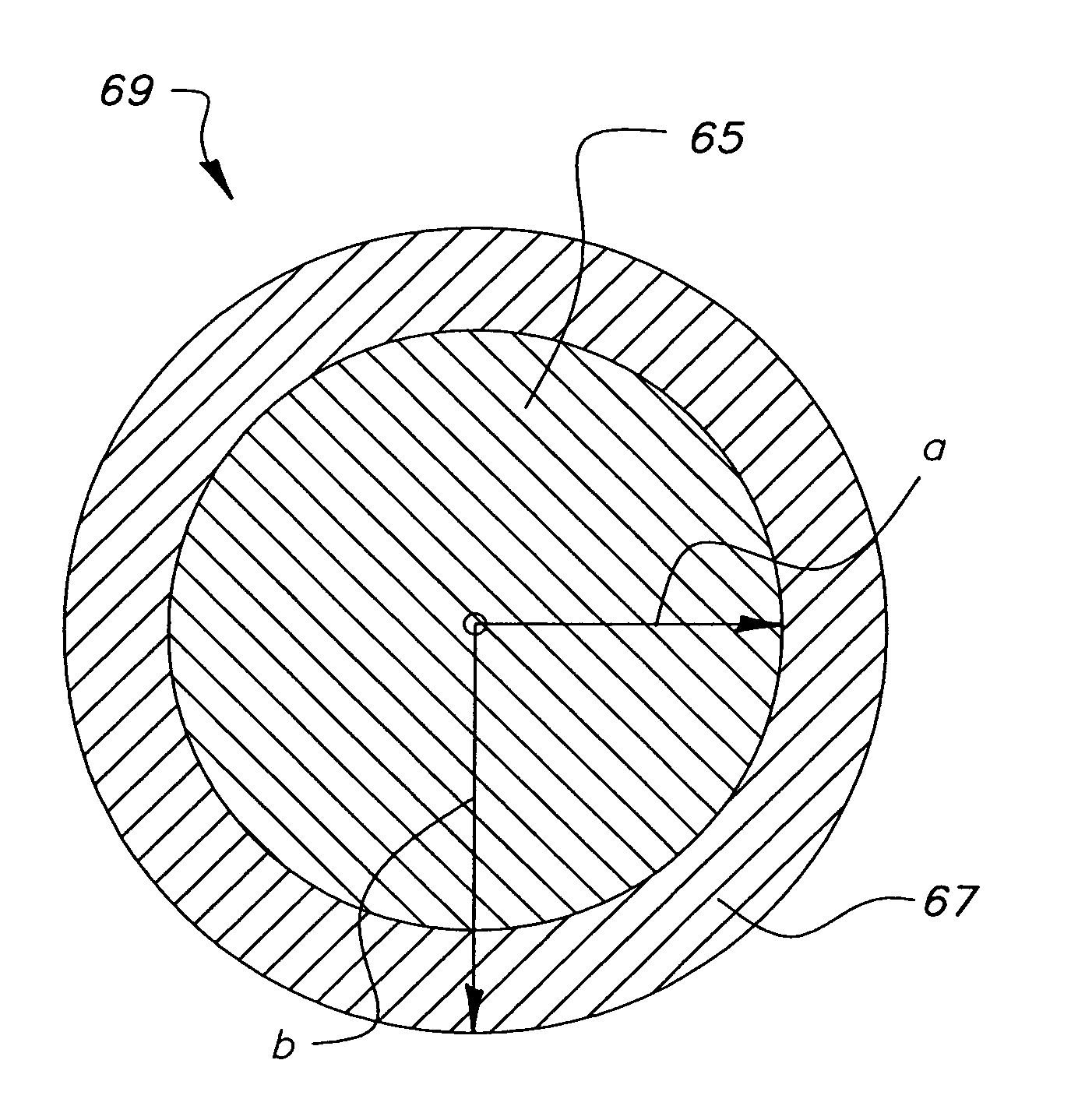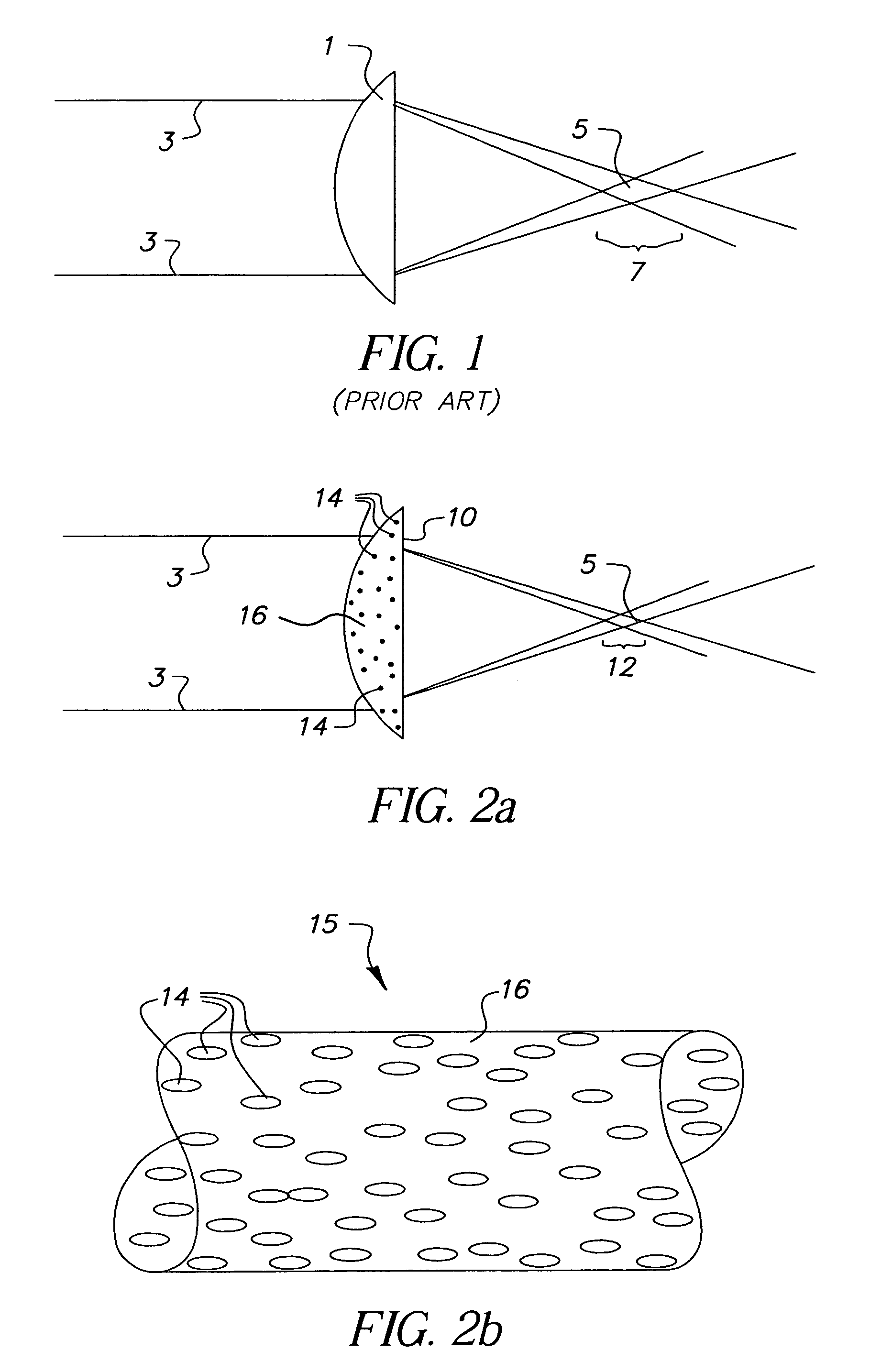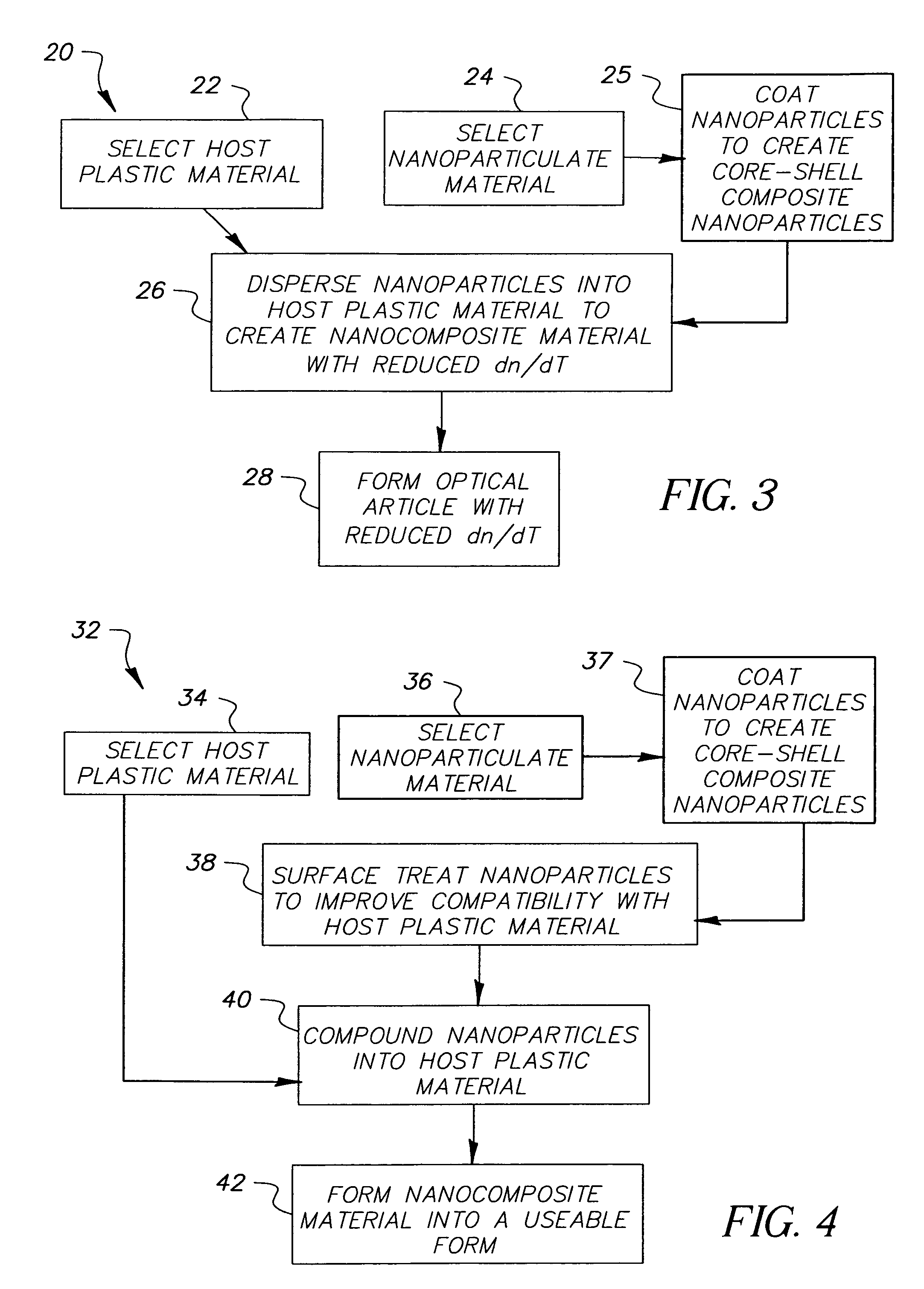Method of manufacturing a polymethylmethacrylate core shell nanocomposite optical plastic article
a technology of polymethylmethacrylate and core shell, applied in the field of plastic optical articles and films, can solve the problems of high cost, laborious grinding and polishing, and high temperature at which glass must be formed, and achieves the effects of high production efficiency, high production efficiency, and high production efficiency
- Summary
- Abstract
- Description
- Claims
- Application Information
AI Technical Summary
Benefits of technology
Problems solved by technology
Method used
Image
Examples
example 1
[0056]An example of the aforementioned method for reducing dn / dT of an optical plastic while retaining excellent transparency follows:
[0057]Three (3) samples were prepared using a polymethylmethacrylate polymeric base material (n=1.49) and nanoparticle fillers of approximately 15 nm size. The nanoparticles were all solvent dispersed at approximately 4% loading. The first sample was made with silica nanoparticles (n=1.45) and it was very clear. This result is due to the fact that the silica nanoparticles have nearly the same index of refraction as the polymethylmethacrylate plastic host material (1.49 vs 1.45) and light scattering does not occur to an appreciable extent. The second sample was made with magnesium oxide nanoparticles (n=1.72) and it was quite hazy. The third sample was made with zinc sulfide nanoparticles (n=2.35) and it was nearly opaque.
[0058]Observations of relative levels of haze produced in the 3 samples were supported by calculated values from a light scattering ...
example 2
[0060]A further example shows the importance of the coating thickness on the level of haze produced by composite nanoparticles. Again, the light scattering model was used to evaluate the haze levels produced by composite nanoparticles with various shell thicknesses. Three (3) coating thicknesses were evaluated with 4% zinc sulfide (n=2.35) nanoparticles in polymethylmethacrylate (n=1.49). The zinc sulfide nanoparticles were 20 nm and coated with silica (n=1.45) with the coating thicknesses being 5 nm, 8 nm and 17 nm where the 17 nm thick coating is the optimum thickness as calculated by Equation 1. The results showed haze levels of 44%, 29%, and 2% respectively which shows that coating thickness is important to produce the lowest haze level.
example 3
[0061]Another example shows the impact of different types of coatings on optimum coating thickness. The light scattering model was again used to evaluate material combinations and the effect on haze. In this case, 10 nm zinc sulfide (n=2.35) nanoparticles coated with 3 nm of magnesium fluoride (n=1.38) and loaded to 4% in a polycarbonat a haze level of only 1%. In this case, the refractive index of the coating is quite different from the plastic host refractive index, 1.38 vs 1.59. Consequently the coating thickness does not need to be as thick as the case examined in Example 2 where the coating had to be 5 times as thick (17 nm) because the refractive index of the coating was close to that of the plastic host, 1.45 vs 1.49.
[0062]The invention has been described with reference to a preferred embodiment. However, it will be appreciated that variations and modifications can be effected by a person of ordinary skill in the art without departing from the scope of the invention.
PUM
| Property | Measurement | Unit |
|---|---|---|
| particle size | aaaaa | aaaaa |
| particle size | aaaaa | aaaaa |
| particle size | aaaaa | aaaaa |
Abstract
Description
Claims
Application Information
 Login to View More
Login to View More - R&D
- Intellectual Property
- Life Sciences
- Materials
- Tech Scout
- Unparalleled Data Quality
- Higher Quality Content
- 60% Fewer Hallucinations
Browse by: Latest US Patents, China's latest patents, Technical Efficacy Thesaurus, Application Domain, Technology Topic, Popular Technical Reports.
© 2025 PatSnap. All rights reserved.Legal|Privacy policy|Modern Slavery Act Transparency Statement|Sitemap|About US| Contact US: help@patsnap.com



